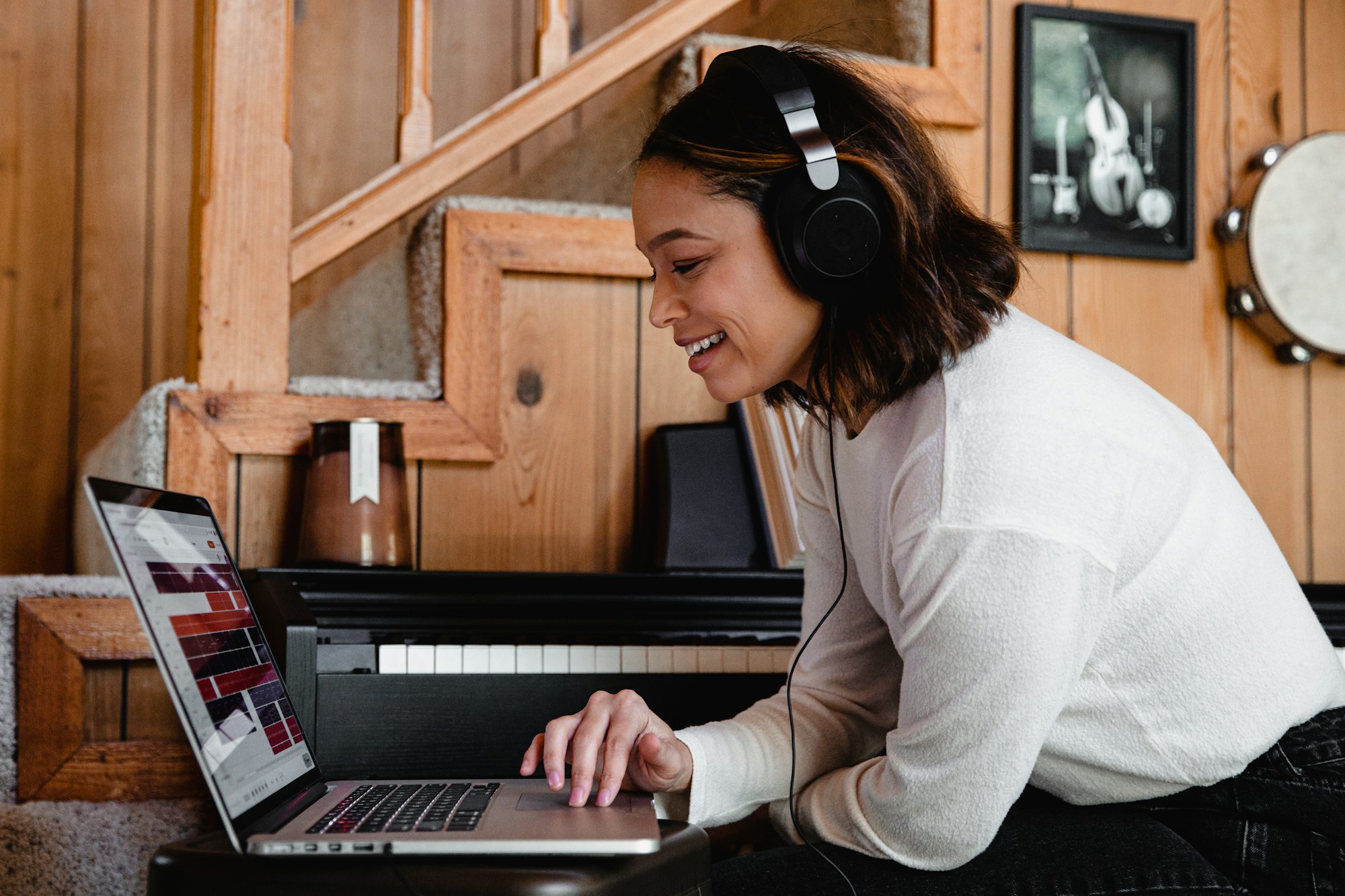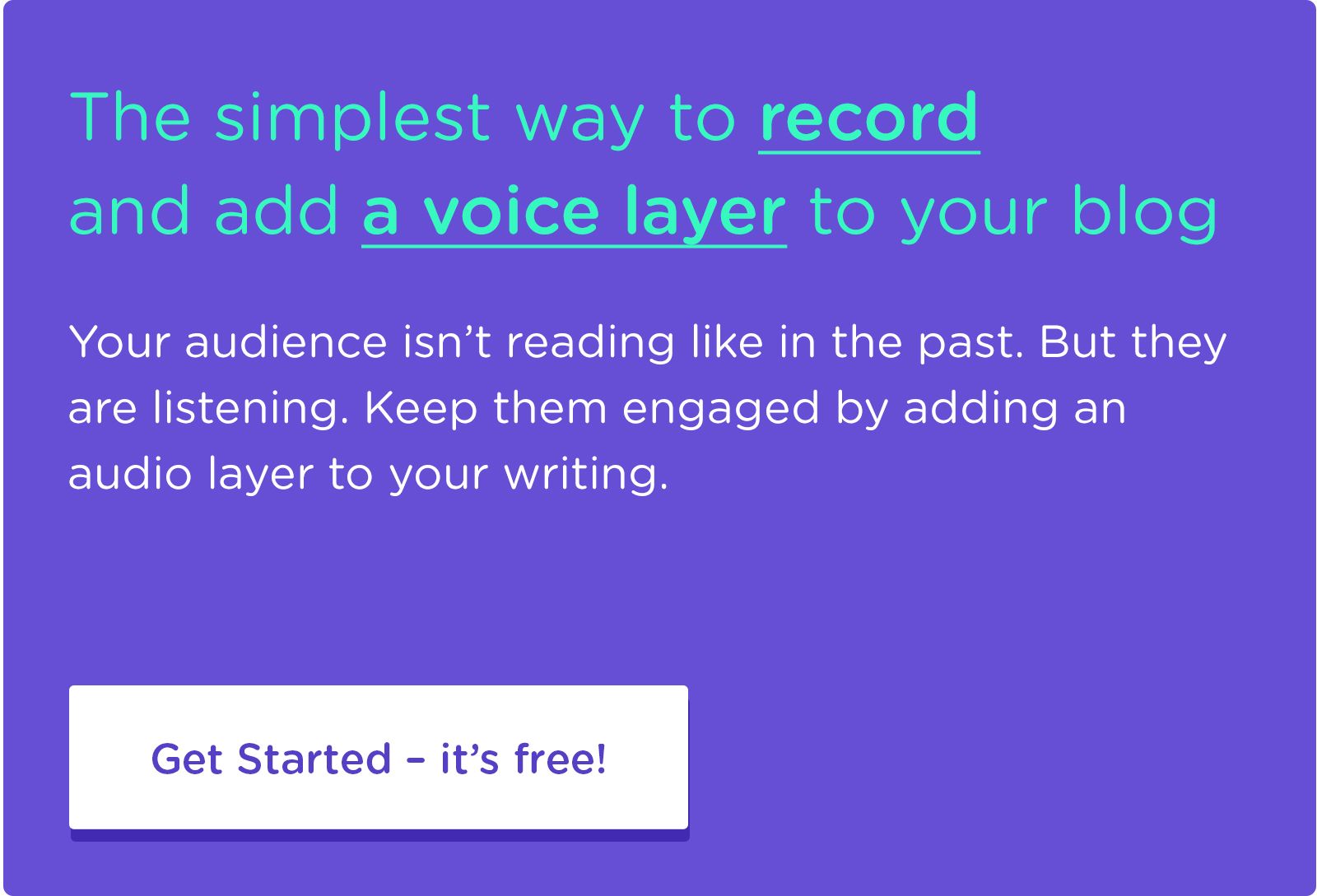Should I Start a Podcast to Grow My Audience?
Learn about the pros and cons of podcasting, and explore an alternative way to leverage audio content to grow your audience.

“I should start a podcast.” - The beginning of a failed podcast
“You should start a podcast.” - The beginning a successful podcast
“Hey Alexa, should I start a podcast?” - Potentially the start of a new part-time job
Thanks to the rising popularity of devices with virtual assistants, audiobooks, and native podcast apps, audio content is on the rise and quickly demanding a place in the modern marketing mix.
So wrestling with whether you should start a podcast is completely natural and probably inevitable.
However, before you hit ‘record’, it’s important to understand the demands of a podcast on your time and wallet. We’ll also show you some alternative ways to get the benefits of audio content without adding a whole new stack of programming to the mix.
The Benefits of Audio Content
There are tons of benefits to adding audio content:
- It’s an easy way for your audience to engage with what you create. Followers can now listen in the car, while they do the dishes, while at the gym, while slinging spreadsheets, or running errands. No more dropping everything just to read your latest blog post.
- It makes your content more visible through voice-automated searches and smart speakers, which are rising in popularity and can boost your search rankings.
- It gives your audience a new, more intimate way to connect with you through the power of your voice and personality. Hello, higher retention rates and deeper audience loyalty.
The State of Podcasting in 2021
Listen, we loved Serial too and we’re adamant Tim Ferriss regulars, but we’re not racing to hit record on our own podcast.
Let’s take a look at the state of podcasting:
As Seth Godin explains, “any platform that’s reasonably open has a long tail. That means that a few people get most of the traffic and most people get very little. If there’s money involved, that’s definitely what happens.”
As he points out, 124 downloads per episode is the median.
The data shows that podcasting is a wildly competitive, hockey-stick-distributed-field of a few big winners and a whole lot of shouting into the void.
It’s more like playing the lottery than premiering your content to a new audience.
Plus, even if you’re just looking to serve an existing list or use guest invitations as a way to contact influencers, it’s worth understanding the work required to create and maintain a podcast.
How to Make a Podcast
In theory, recording a podcast sounds relatively easy.
Pick a topic, invite an interesting friend, hit record, then throw it on Apple Podcasts. Rinse and repeat, and viola! You’re an online sensation.
In reality, there are a lot of steps that can add up to a lengthy, Sisyphean time investment:
1) Picking a Topic
Some podcasts are carried by the charming personality of the host, but you’ll rarely find a successful podcast that doesn’t wrestle with a unifying topic or theme. For example, let’s look at a few of the top 100 podcasts:
- Radiolab: “Created in 2002 by host Jad Abumrad, Radiolab began as an exploration of science, philosophy, and ethics using innovative composition and sound design. Radiolab has expanded and evolved to become a platform for long-form journalism and storytelling. The show challenges its listeners’ preconceived notions about how the world works. Radiolab provokes, it moves, it delights, and it asks its audience to see the world around them anew.”
- Crime Junkie: “Crime Junkie is a weekly true crime podcast dedicated to giving you a fix. Every Monday, Ashley Flowers will tell you about whatever crime she’s been obsessing over that week in a way that sounds like you’re sitting around talking crime with your best friends.”
- The Daily: “The biggest stories of our time, told by the best journalists in the world. Hosted by Michael Barbaro. Twenty minutes a day, five days a week, ready by 6 a.m.”
All of these podcasts are built around an interesting question, a common theme (news, crime or science) and are staffed by industry experts.
Even if you’re not chasing the top 100 list, branded podcasts that rely solely on personal experiences or wandering conversations rarely get much attention. Without setting expectations with your listeners and creating episodes under some kind of collective umbrella, you’ll have a hard time earning their attention and loyalty.
2) Recruiting Interesting Guests and Finding Fascinating Stories
Once you’ve picked a topic, you’ll need to find stories or guests that your target audience is interested in hearing from. We’re not necessarily saying you need Michelle Obama for Episode 1, but hosting unknown guests means a steeper hill to climb.
If your podcast follows a narrative format, that not only means tracking down, getting in touch with, and interviewing excellent guests – but it also requires you to figure out how these different interviews can be assembled into a single, compelling episode.
3) Editing, Editing, and More Editing
Even if you ditch the narrative format and your podcast relies solely on interviews, you’ll still need to create intros and outros and clean up the audio before you release an episode.
That means no hard S’s, removing ums and likes, and working around guests who say things like “as I mentioned earlier…” – especially if that thing they mentioned didn’t make it into the episode.
4) Promotion and Marketing
Unlike Kevin Costner in Field of Dreams, when you build it, they usually don’t come. Not only do you need to jump through all the hoops to create a unique, interesting, and compelling podcast built specifically for your audience, you also need to invest your time and energy into promoting it.
This category can range from posting across podcasting channels and networks, to bugging your network to listen and subscribe, to soliciting ratings, all the way to pushing your guests to promote episodes to their own networks.
Promotion can feel never-ending, and the time you spend doing it doesn’t always translate proportionally into more listeners.
5) More Episodes Followed By ...More Episodes
Podcasts that are successful tend to have a continuous format. It’s hard to break to the top 100 with a limited series of six episodes. That means that once you start, you’ll need to keep the wheel turning and churning out more and more podcasts.
A Way to Bake Your Audio Cake and Eat It Too
Maybe you read through that list and still believe a podcast is the right thing to do to grow your audience. If you’re invested in the medium, have the time and energy to create a compelling podcast, and are in it for the long haul – all power to you. You’ve got this, you handsome reader.
If you’re looking at that list and wondering how on earth you could fit an entirely new set of programming into the mix, a) you’re not alone and b) there’s an excellent alternative that can help you leverage audio content without the added new channel considerations.
The Power of Audio Blogging
Rather than scrapping together brand new content, you can take the work you’ve already put in into your last blog post, and create a recorded version to post directly on your website.
That means no guest recruiting, no never-ending hours of storyboarding, no new promotional demands on your time and budget, and no endless editing cycles where common words start to sound like strange, unfamiliar sounds.
It also means you get the SEO benefits of audio content, an entirely new format you can use directly on your blog to improve time on site, and a new way to reach your audience while they’re in the car, doing the dishes, or just living their lives – without requiring them to sit down and actually read it.
What Does It Take to Audio Blog?
There are still a few considerations to be aware of before you start audio blogging. You’ll need to record yourself reading your blogs. You may need to re-record from time to time.
...That’s it.
That’s the list, especially if you’re using a simple platform like Allears. Compare that to the podcast requirements above, and you’re saving yourself a whole lot of time, energy, and future chores.
The Power of Your Voice
If you’ve found some success building an audience through blogging, adding your own voice into the mix provides a level of intimacy and emotional connection that can sometimes get lost in sentence structure.
That doesn’t mean you need to create the world’s next most popular podcast. Use simple audio tools that can help you get audio blogs up quickly, and you’ll open a whole new doorway for your audience to get to know you, engage with your content, and stick around for the long haul.


